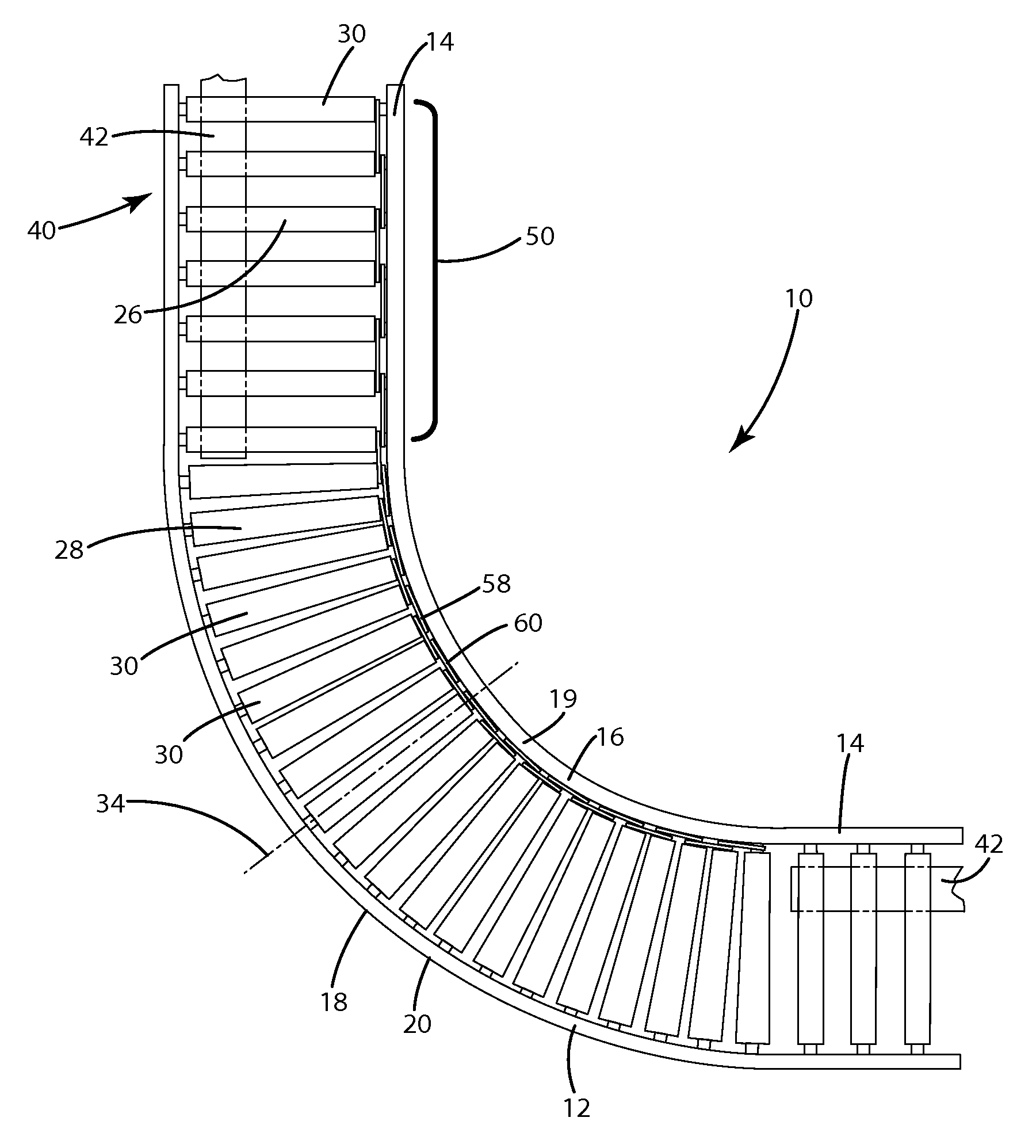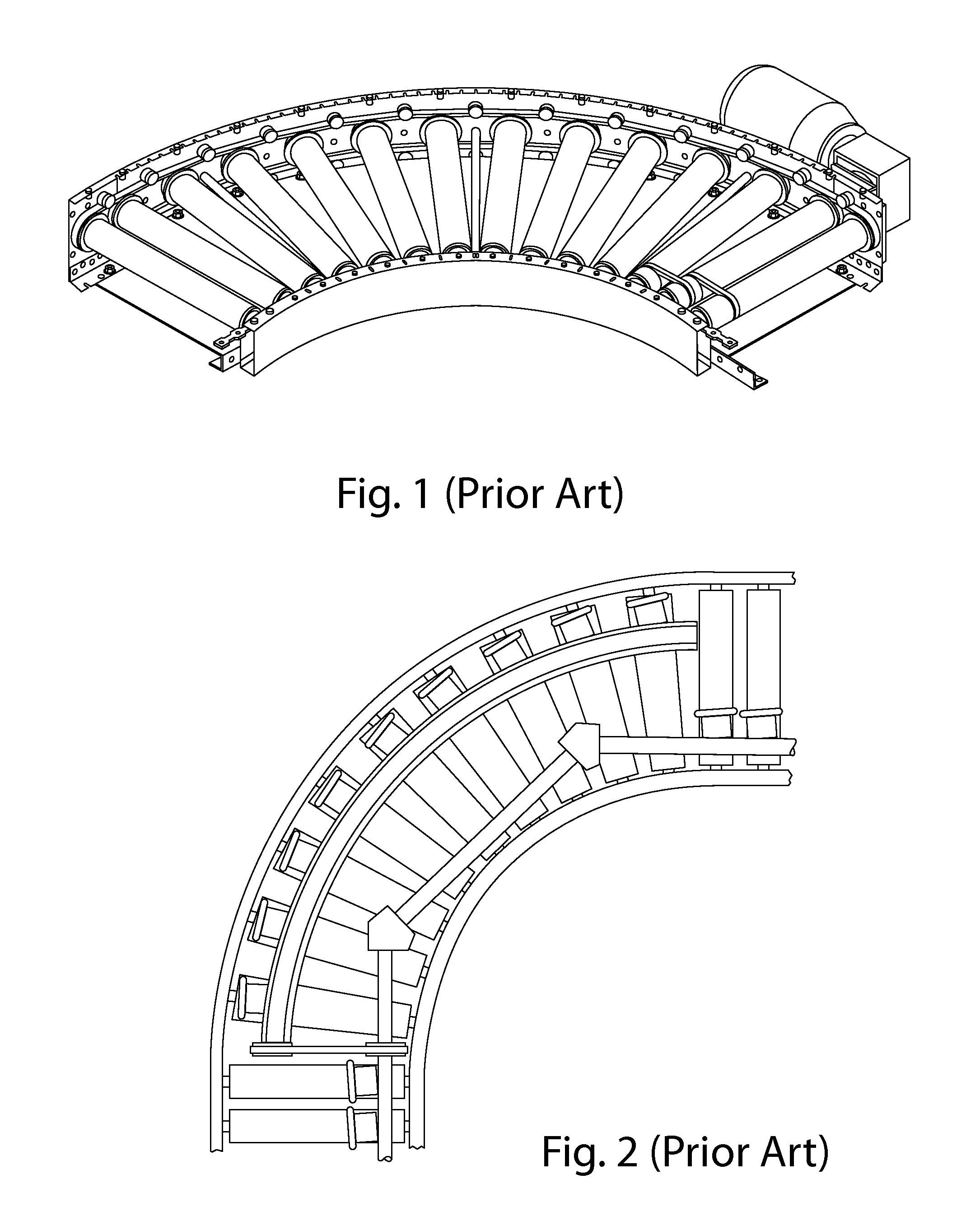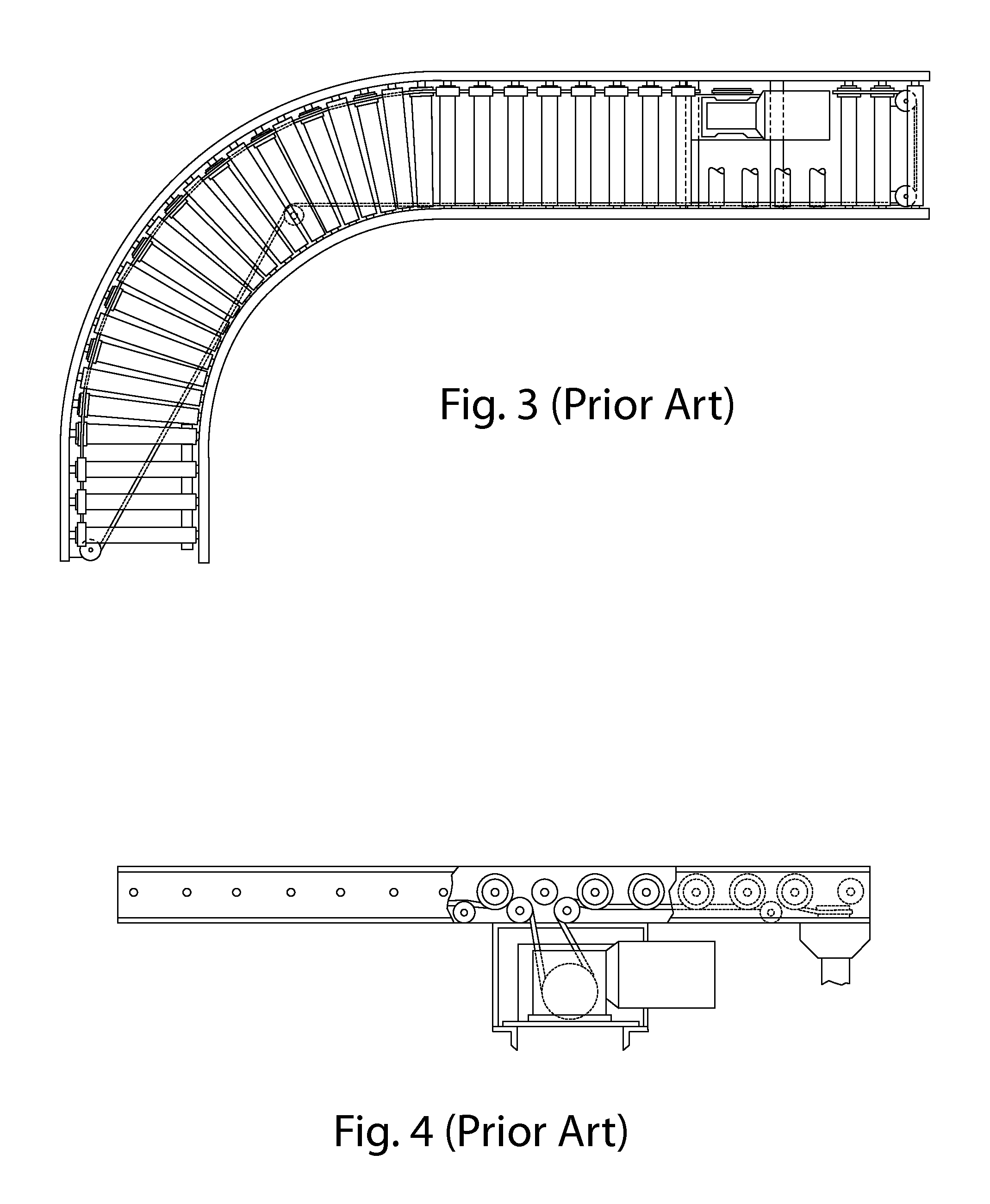Drive system for curved roller conveyor segments
a technology of curved segments and drive systems, which is applied in the direction of conveyors, roller-ways, transportation and packaging, etc., can solve the problems of complex electronic clutches, difficult to have the rollers in the curved segment accumulate in sequence, and the drive system for curved segments is traditionally more complex and expensive than the drive system, so as to achieve easy and efficient transfer of the ability to turn the rollers, the effect of cost-effective, efficient and reliabl
- Summary
- Abstract
- Description
- Claims
- Application Information
AI Technical Summary
Benefits of technology
Problems solved by technology
Method used
Image
Examples
Embodiment Construction
[0036]The present invention is generally directed to a conveyor system 10 and more specifically to a roller bed conveyor system, and yet more specifically to a drive system 20 for an accumulator conveyor system 10. The conveyor system 10 generally includes a structural support assembly 12 including supporting legs (not shown) and elongated frames 20 running in the direction of travel of the loads. The frames 20 are located on each side and support and properly space the individual rollers 30 that form the roller bed and rotate about an operational axis 29. As illustrated in the Figures, the frames 20 may be straight in certain segments as well as curved in others.
[0037]In the present invention, the conveyor system 10, structural support assembly 12 and associated frames 20 may be made in any size, shape, and configuration such as having various lengths and radii to transport loads along the desired paths and to the desired locations. The conveyor system 10 is specifically configured...
PUM
 Login to View More
Login to View More Abstract
Description
Claims
Application Information
 Login to View More
Login to View More - R&D
- Intellectual Property
- Life Sciences
- Materials
- Tech Scout
- Unparalleled Data Quality
- Higher Quality Content
- 60% Fewer Hallucinations
Browse by: Latest US Patents, China's latest patents, Technical Efficacy Thesaurus, Application Domain, Technology Topic, Popular Technical Reports.
© 2025 PatSnap. All rights reserved.Legal|Privacy policy|Modern Slavery Act Transparency Statement|Sitemap|About US| Contact US: help@patsnap.com



